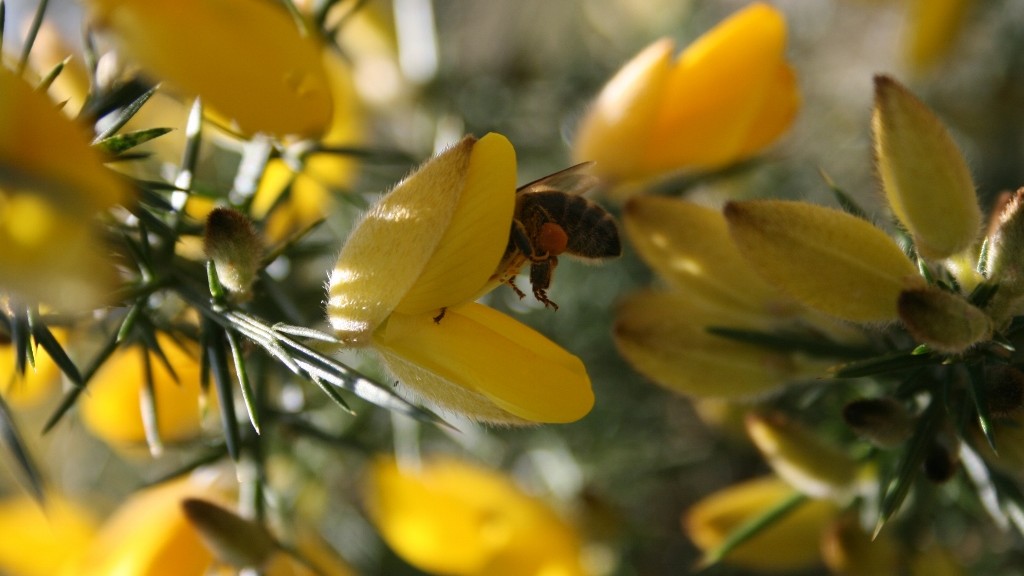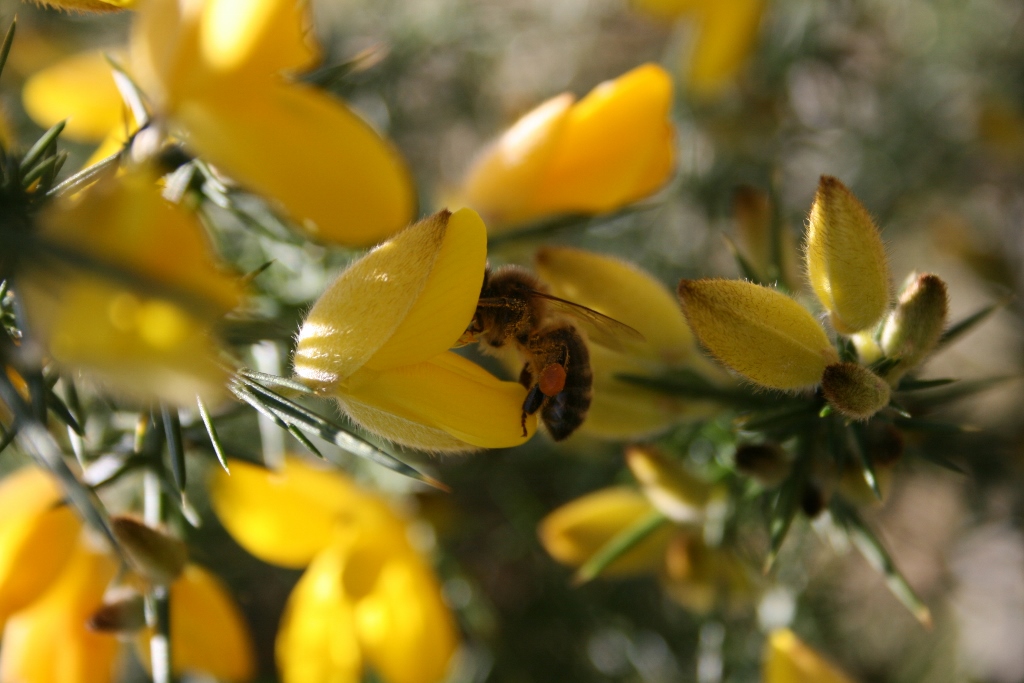Here’s an interesting photograph – the bee in the photo above is being hoisted aloft inside a gorse flower (Ulex europaeus) by the spring-loaded pollination-paraphernalia. Note the brownish orange pollen load.
In the picture below you can see the bee reversing out with its belly covered in pollen. Click the picture for a better look.
For more on the intricacies of gorse pollination click here.
Copyright © Beespoke.info, 2014. All Rights Reserved.


How come if gorse is worked by bees, my bees nearly starved when sited in the middle of flowering gorse? Gorse produces no nectar which is as essential for bees as the pollen.
You’re right – little or no nectar but the gorse is an essential supply of pollen early in the year when there isn’t much else about.
How do i get gorse to grow from seeds thanks Danny
It is a robust native shrub and seems to be a plant that is well able to set its own seeds.
However, you could gather the seeds when they’re ripe and the pods are popping then just scatter them where you want them to grow, lightly rake them in then walk away.
Wonderful photograph of the act of pollination. As a botanist I try to encourage my students to watch this process, and the same applies to broom too. I’m sure you appreciate how the whole of the Fabacaea are so intimately evolved in tandem with bees, one can see it so well with both gorse and broom but the mechanisms are subtly different for the clovers.
I agree that the bees and the gorse have evolved together, it should also be noted the this plant act as a protector to wild life, for travel, nesting birds, also to elude from preditors, I grew up in this environment where gorse was abundant in the 50’s. It has a high rate of combustion due to its
dryness below the canopy
Well said Freddy! Gorse is so important for wildlife but mostly unappreciated. If this ‘Heritage’ Bill goes through this week we may be looking at a lot less of it next March. See my latest post for more about that.